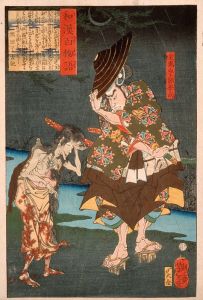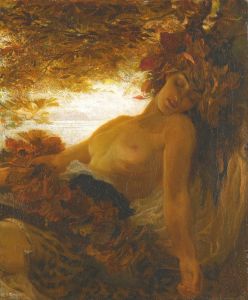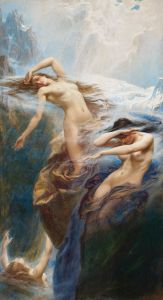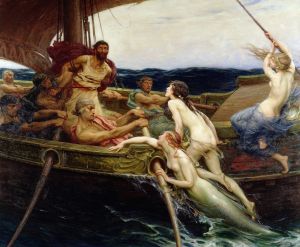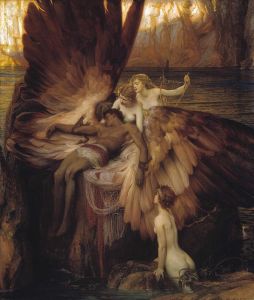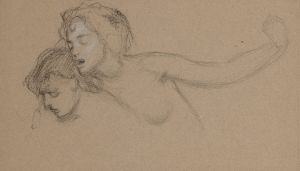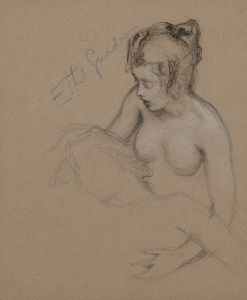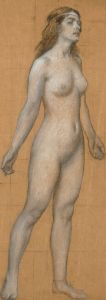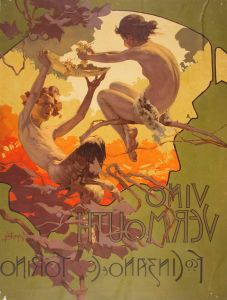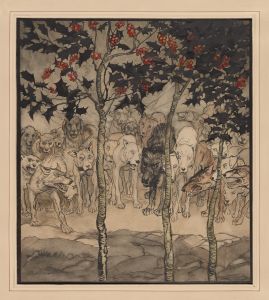
Study of a Water-nymph for ‘Prospero Summoning Nymphs and Deities’
A hand-painted replica of Herbert James Draper’s masterpiece Study of a Water-nymph for ‘Prospero Summoning Nymphs and Deities’, meticulously crafted by professional artists to capture the true essence of the original. Each piece is created with museum-quality canvas and rare mineral pigments, carefully painted by experienced artists with delicate brushstrokes and rich, layered colors to perfectly recreate the texture of the original artwork. Unlike machine-printed reproductions, this hand-painted version brings the painting to life, infused with the artist’s emotions and skill in every stroke. Whether for personal collection or home decoration, it instantly elevates the artistic atmosphere of any space.
Herbert James Draper was a prominent British artist known for his mythological and allegorical subjects, often drawing inspiration from classical literature and mythology. One of his notable works is "Study of a Water-nymph for ‘Prospero Summoning Nymphs and Deities’," which showcases his skill in capturing the ethereal beauty and grace of mythological figures.
Draper was born in London in 1863 and studied art at the Royal Academy of Arts. He further honed his skills in Paris, where he was influenced by the academic style of painting. Draper became well-known during the late 19th and early 20th centuries, a period often referred to as the "Golden Age" of British painting. His works are characterized by their romantic and often sensual portrayal of mythological themes, rendered with meticulous attention to detail and vibrant use of color.
The painting "Study of a Water-nymph for ‘Prospero Summoning Nymphs and Deities’" is a preparatory study for a larger work that Draper created, inspired by William Shakespeare's play "The Tempest." In the play, Prospero, the rightful Duke of Milan, uses his magical powers to summon various spirits and deities to assist him. Draper's study focuses on the figure of a water-nymph, a common motif in mythology representing the spirits of nature, often associated with bodies of water such as rivers, lakes, and springs.
In this study, Draper captures the delicate and fluid form of the water-nymph, emphasizing her connection to the natural world. The figure is depicted with a sense of movement and grace, embodying the ethereal qualities often attributed to nymphs. Draper's use of light and shadow enhances the three-dimensionality of the figure, while his attention to anatomical detail reflects his academic training.
The study serves as a testament to Draper's ability to blend classical themes with a romantic sensibility, creating works that are both timeless and evocative. His portrayal of mythological subjects often imbued them with a sense of narrative and emotion, inviting viewers to engage with the stories and characters depicted.
Draper's work, including this study, was well-received during his lifetime, and he exhibited regularly at the Royal Academy and other prestigious venues. His paintings were popular among collectors and continue to be appreciated for their technical skill and imaginative compositions.
Today, Draper's works are held in various public and private collections, and he is remembered as one of the leading figures of the British academic art movement. "Study of a Water-nymph for ‘Prospero Summoning Nymphs and Deities’" remains an example of his ability to capture the beauty and mystique of mythological subjects, reflecting the enduring appeal of classical themes in art.







